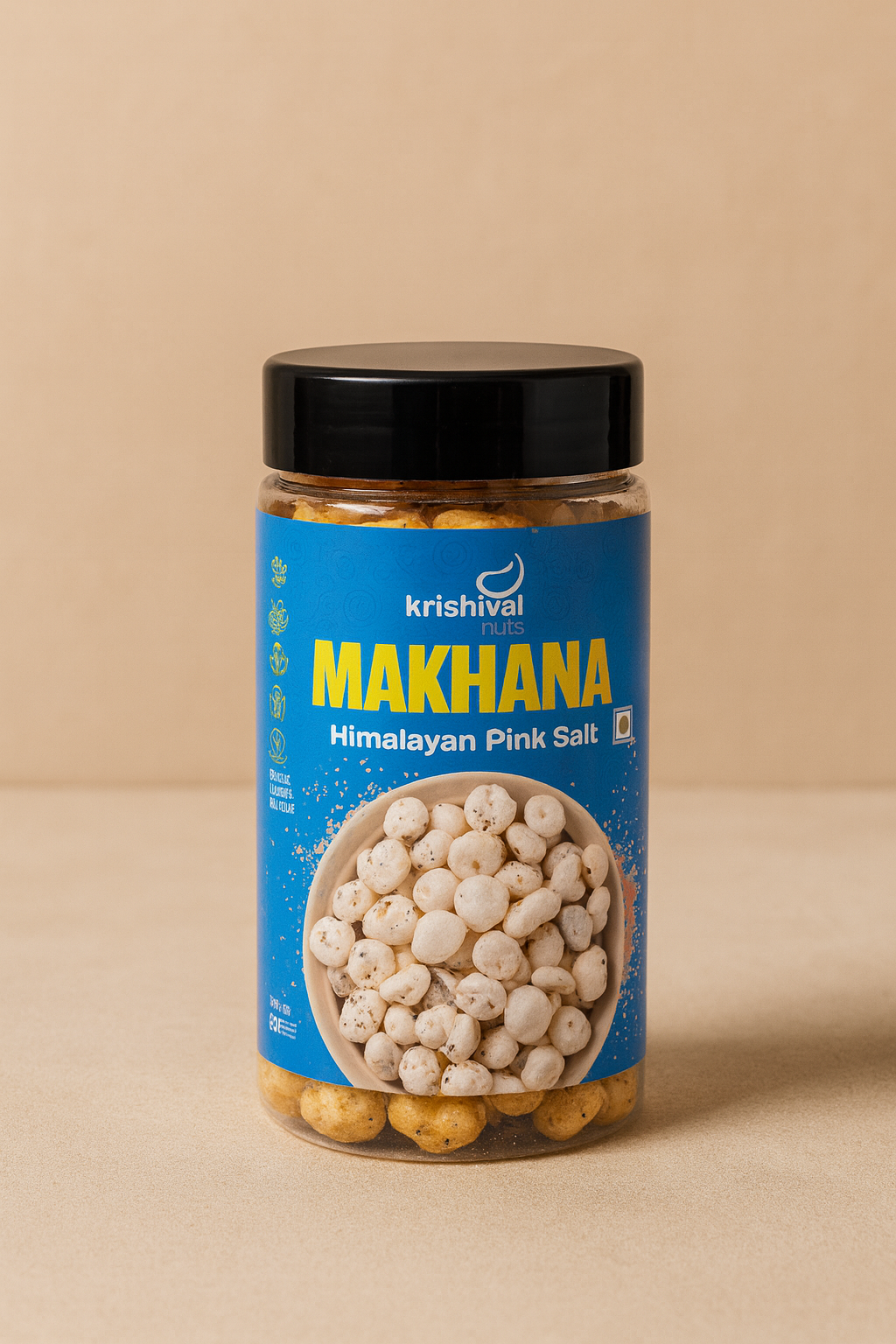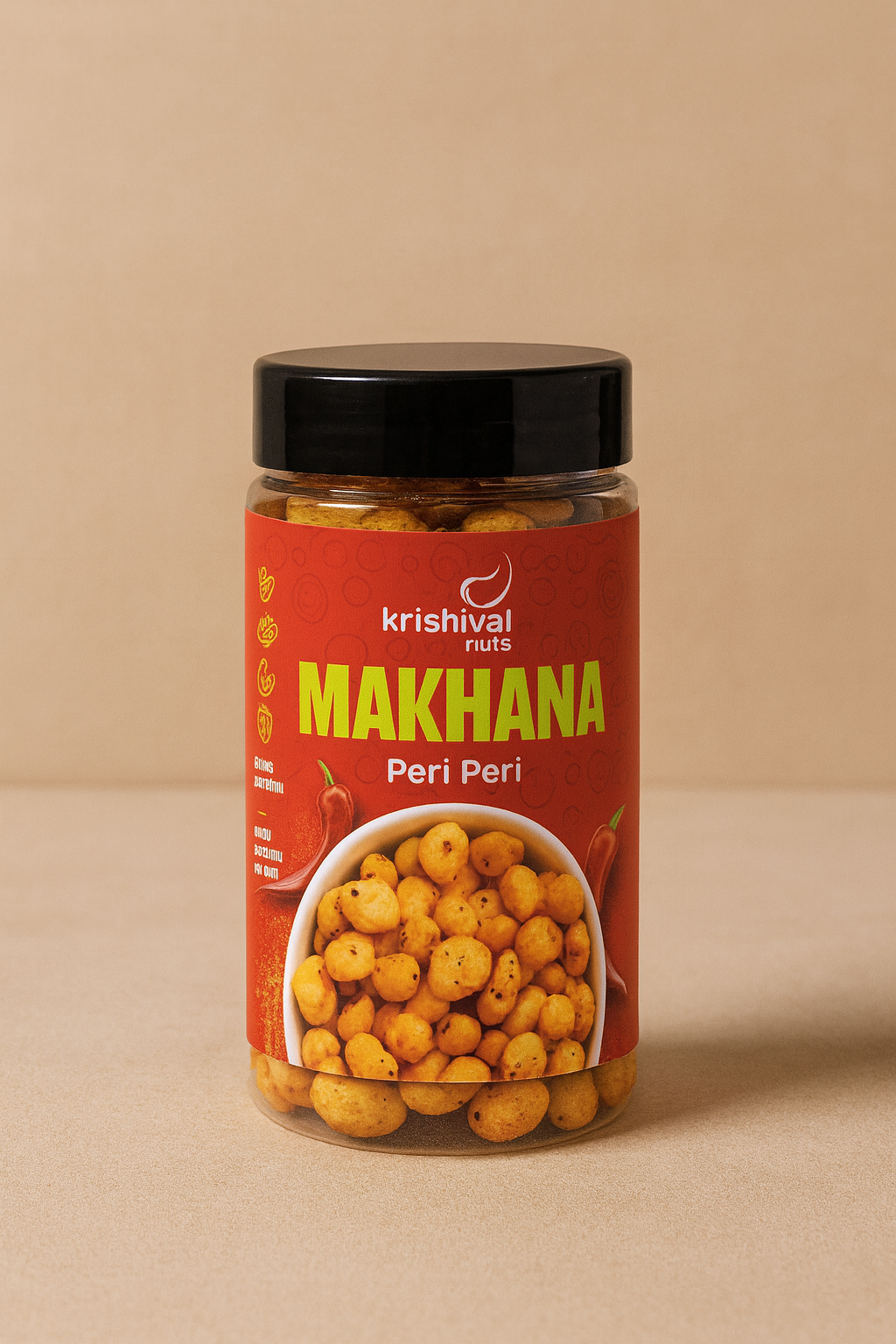Nuts are celebrated as one of the healthiest snacks, providing a rich array of nutrients that benefit both body and mind. Among the many options, pine nuts and almonds stand out as two of the most popular and nutrient-dense choices. While they may appear similar at first glance, these two nuts have distinct differences in terms of their nutritional profiles, health benefits, and culinary uses.
In this article, we’ll explore the nutritional benefits of pine nuts and almonds, comparing their macronutrient content, vitamins, minerals, and unique health advantages. Whether you're looking to enhance your diet with protein-packed snacks, boost heart health, or simply satisfy your taste buds, understanding the nutritional value of these nuts will help you make a more informed decision.
Table of Contents:
-
Introduction
-
Nutritional Overview of Pine Nuts and Almonds
-
Macronutrient Comparison
-
Vitamins and Minerals Content
-
Health Benefits of Pine Nuts
-
Health Benefits of Almonds
-
Culinary Uses and Flavor Profiles
-
Cost Comparison
-
Conclusion
-
FAQs
Nutritional Overview of Pine Nuts and Almonds
Both pine nuts and almonds are packed with essential nutrients, offering a variety of health benefits. However, they differ in certain aspects, making each unique in its own way.
Pine Nuts
Pine nuts, the edible seeds found inside the cones of pine trees, are tiny yet packed with goodness. These seeds have been used in Mediterranean cuisine for centuries, known for their rich, buttery flavor and smooth texture. Nutritionally, pine nuts are an excellent source of healthy fats, particularly monounsaturated fats, which are beneficial for heart health.
Pine nuts also provide a significant amount of protein, though less than almonds, and are rich in essential vitamins and minerals like vitamin E, magnesium, zinc, and iron. These nutrients contribute to various bodily functions, such as boosting the immune system, supporting healthy bones, and maintaining good skin health.
Almonds
Almonds, the seeds of the almond tree, are widely consumed around the globe and are often seen as one of the most nutritious snacks. They are high in healthy fats, particularly monounsaturated fats, which help lower bad cholesterol levels and promote heart health. In addition to their healthy fat content, almonds are packed with protein, dietary fiber, and a variety of essential vitamins and minerals.
Almonds are particularly known for their high vitamin E content, which acts as a powerful antioxidant, and their rich magnesium content, supporting muscle and nerve function. They are also an excellent source of calcium, which is important for bone health, and iron, which helps in the production of red blood cells.
Both nuts are low in carbohydrates and provide a small but significant amount of fiber, making them great additions to a balanced diet. However, the specific nutrient breakdown of each nut varies slightly, which is worth considering when choosing the best option for your dietary needs.
Macronutrient Comparison
When it comes to macronutrient content, pine nuts and almonds are both nutritious, but they differ in the proportions of fats, proteins, and carbohydrates they contain. Here’s a closer look at how they compare per 1-ounce serving:
|
Nutrient |
Pine Nuts (1 oz) |
Almonds (1 oz) |
|
Calories |
191 kcal |
164 kcal |
|
Protein |
3.9 g |
6 g |
|
Fat |
19.5 g |
14 g |
|
Carbohydrates |
3.7 g |
6 g |
|
Dietary Fiber |
1.0 g |
3.5 g |
Key Takeaways:
-
Calories: Pine nuts contain slightly more calories, largely due to their higher fat content, making them a more energy-dense option compared to almonds.
-
Protein: Almonds are higher in protein, offering 6 grams per ounce, compared to pine nuts, which provide 3.9 grams. This makes almonds a better choice if you're looking for a higher protein snack.
-
Fat: Pine nuts have significantly more fat (19.5 grams) than almonds (14 grams). While both are rich in healthy fats, pine nuts are particularly dense in monounsaturated fats, which are beneficial for heart health.
-
Carbohydrates: Almonds have more carbohydrates, though they come with a higher fiber content, which helps with digestion and controlling blood sugar levels. Pine nuts have fewer carbs, which may be better for those following a low-carb or ketogenic diet.
-
Fiber: Almonds take the lead with 3.5 grams of dietary fiber per ounce, contributing to digestive health and longer-lasting fullness. Pine nuts provide just 1 gram, making them lower in fiber.
Vitamins and Minerals Content
Both pine nuts and almonds are rich in essential vitamins and minerals, though they differ in the specific nutrients they offer. Let’s explore their vitamin and mineral profiles:
Pine Nuts
Pine nuts are a good source of several vital vitamins and minerals, including:
-
Vitamin E: Known for its antioxidant properties, vitamin E helps protect cells from oxidative damage, contributing to overall health and skin health.
-
Magnesium: This mineral plays a critical role in supporting muscle function, regulating blood sugar levels, and maintaining healthy bones.
-
Zinc: Zinc is essential for immune function, cell division, and wound healing, making it a key mineral in overall health.
-
Iron: Important for the production of red blood cells and transporting oxygen throughout the body, iron helps maintain energy levels and prevent fatigue.
-
Vitamin K: Pine nuts provide a small but significant amount of vitamin K, which is important for blood clotting and bone health.
Almonds
Almonds are packed with vitamins and minerals that contribute to a variety of health benefits:
-
Vitamin E: Almonds are one of the best plant-based sources of vitamin E, which serves as a powerful antioxidant to protect against inflammation and oxidative damage.
-
Magnesium: Like pine nuts, almonds are a great source of magnesium, supporting bone health, muscle function, and energy production.
-
Calcium: Almonds contain a good amount of calcium, essential for maintaining strong bones and teeth, as well as proper nerve function.
-
Iron: While almonds contain iron, their levels are lower than those in pine nuts. Still, they contribute to maintaining healthy red blood cells and energy levels.
-
Riboflavin (Vitamin B2): Almonds contain riboflavin, which helps convert food into energy, supports cellular function, and is important for healthy skin and eyes.
Key Takeaways:
-
Vitamin E: Both pine nuts and almonds are excellent sources of vitamin E, though almonds are generally considered the better source due to their higher content.
-
Magnesium: Both nuts are high in magnesium, which is crucial for heart health, muscle function, and overall wellness.
-
Zinc: Pine nuts stand out for their higher zinc content, supporting immune health and cell repair.
-
Calcium: Almonds are a better source of calcium, making them a good choice for bone health, especially for individuals who don't consume dairy products.
Health Benefits of Pine Nuts
Pine nuts are not only delicious but also offer a variety of health benefits. These small, nutrient-dense nuts are packed with essential vitamins and minerals, making them a great addition to any diet. Here’s a closer look at some of the key health benefits:
-
Supports Heart Health: Pine nuts are a good source of monounsaturated fats, which are known to help lower bad cholesterol (LDL) and reduce the risk of cardiovascular diseases. The antioxidants found in pine nuts also support overall heart health by protecting against oxidative stress.
-
Boosts Metabolism: Pine nuts contain a unique compound called pinolenic acid, which has been shown to enhance appetite control and stimulate the release of appetite-regulating hormones. This can help you feel fuller for longer, which may support healthy weight management.
-
Improves Skin Health: Pine nuts are rich in vitamin E, a powerful antioxidant that helps protect the skin from oxidative damage caused by free radicals. Vitamin E also helps maintain skin moisture and elasticity, contributing to a youthful appearance.
-
Supports Brain Function: The high levels of magnesium and zinc in pine nuts are beneficial for cognitive function. Magnesium is important for nerve function, while zinc plays a key role in maintaining memory and overall brain health. Regular consumption of pine nuts may help improve focus and mental clarity.
-
Boosts Immune System: Pine nuts are a good source of zinc, which is crucial for immune system function. Zinc helps the body fight off infections and promotes faster healing. By including pine nuts in your diet, you can help keep your immune system strong and resilient.
Health Benefits of Almonds
Almonds are a popular nut known for their versatility in both savory and sweet dishes. Beyond their delightful flavor and texture, almonds offer numerous health benefits, making them an excellent choice for promoting overall wellness. Here’s a breakdown of the key benefits of almonds:
-
Aids in Weight Management: Almonds are an excellent snack for those looking to manage their weight. Their high protein and fiber content help promote feelings of fullness and reduce overall calorie intake. Studies have shown that consuming almonds can prevent overeating, making them a great choice for those looking to control their appetite.
-
Improves Heart Health: Almonds are packed with monounsaturated fats, which help lower bad cholesterol (LDL) and reduce the risk of heart disease. The antioxidant vitamin E found in almonds also helps combat inflammation and oxidative stress, further supporting heart health.
-
Bone Health: Almonds are rich in magnesium and calcium, both of which are essential for maintaining strong bones. Magnesium helps regulate calcium levels in the body, promoting bone density and reducing the risk of fractures. Almonds are a great way to support healthy bone development and maintenance.
-
Regulates Blood Sugar Levels: Almonds have a low glycemic index and are high in fiber, which helps stabilize blood sugar levels. Consuming almonds can help prevent blood sugar spikes and promote better insulin sensitivity, making them an excellent choice for individuals with diabetes or those looking to manage their blood sugar levels.
-
Supports Skin Health: Like pine nuts, almonds are rich in vitamin E, which helps maintain healthy skin. Vitamin E is known for its ability to reduce the appearance of wrinkles, promote skin hydration, and protect the skin from environmental stressors like UV radiation.
-
Boosts Brain Health: Almonds contain healthy fats, antioxidants, and vitamin E, all of which contribute to cognitive function. Regular consumption of almonds has been linked to improved memory, focus, and mental clarity. The healthy fats found in almonds also support the brain’s ability to function at its best.
Culinary Uses and Flavor Profiles
Both pine nuts and almonds are versatile ingredients, with unique flavor profiles that can elevate a wide range of dishes. Their culinary uses differ slightly due to their individual tastes and textures, allowing each nut to shine in specific recipes.
H3 - Pine Nuts
Pine nuts are small, delicate, and have a buttery, slightly sweet flavor with a hint of earthiness. They are often used in Mediterranean and Italian cuisine, where their flavor complements savory dishes like pesto, pasta, and salads. Pine nuts are a key ingredient in pesto, providing a creamy texture when blended with basil, garlic, Parmesan, and olive oil. They are also frequently sprinkled on top of roasted vegetables or added to grain-based salads for extra crunch.
In addition to savory uses, pine nuts can also be incorporated into sweet recipes, such as cookies, cakes, and pastries. Their rich, nutty flavor pairs well with honey, dried fruit, and chocolate, making them a great addition to desserts. Toasting pine nuts before using them can intensify their flavor, adding a subtle smoky note that enhances both sweet and savory dishes.
Almonds
Almonds have a mild, slightly sweet flavor that works well in both sweet and savory dishes. They come in various forms—raw, roasted, slivered, chopped, and even ground into flour—which makes them adaptable to many recipes. Raw almonds are often eaten as a healthy snack, while roasted almonds bring a deeper flavor and crunch.
In the world of baking, almonds are frequently used in cakes, cookies, and pies. Almond flour is a popular gluten-free alternative to regular flour in many baked goods. Almonds are also used in savory dishes, such as in Middle Eastern cuisine, where they are added to rice pilafs or grain salads, or sprinkled on top of roasted meats. For those who enjoy plant-based milk alternatives, almond milk is a widely consumed dairy substitute.
Overall, almonds are known for their versatility in both cooking and baking, with their mild taste making them an easy ingredient to pair with a variety of other flavors.
Cost Comparison
When it comes to price, pine nuts and almonds vary significantly, with pine nuts typically being more expensive due to the labor-intensive harvesting process and lower yield per tree.
Pine Nuts
Pine nuts are among the most expensive nuts on the market. This is largely because harvesting them is a time-consuming process. Pine cones must be collected and processed by hand to extract the seeds, which requires a considerable amount of labor and results in a lower yield compared to other nuts. As a result, pine nuts can cost anywhere from $15 to $25 per pound, depending on the region and quality. The price can fluctuate based on demand and the availability of pine nut harvests, which are not as abundant as other nuts.
Almonds
Almonds are far more affordable compared to pine nuts, thanks to their more accessible cultivation and harvesting methods. Almond trees are grown in large orchards, and the process of harvesting almonds is more mechanized, making it less labor-intensive. As a result, almonds typically cost around $5 to $10 per pound, making them a more budget-friendly option for those looking to incorporate nuts into their diet regularly. Almonds are widely available and less prone to price fluctuations, which contributes to their popularity as a staple in many households.
Overall, while pine nuts offer unique flavor and nutritional benefits, their higher price point may make them a less frequent purchase for those on a budget. Almonds, on the other hand, are a more cost-effective option that provides similar health benefits and versatility in the kitchen.
Conclusion
Both pine nuts and almonds offer distinct nutritional advantages, with each bringing its own set of health benefits. Almonds are a top choice for those seeking a high-protein, fiber-packed snack that supports heart health and weight management. Pine nuts, while slightly more calorie-dense, are rich in healthy fats and magnesium, making them an excellent option for energy and brain function. Ultimately, the choice between these two nuts depends on your specific dietary needs. Whether you prefer the rich, buttery taste of pine nuts or the versatile crunch of almonds, incorporating either into your diet can contribute to improved overall health. For a more balanced and tailored approach to nutrition, consider exploring Krishival, a platform that offers expert advice on choosing the right foods for your health goals.
FAQs
Q1. What are the main differences in calorie content between pine nuts and almonds?
Pine nuts are more calorie-dense than almonds. A 1-ounce serving of pine nuts provides 191 calories, while almonds offer 164 calories per ounce. The higher calorie count in pine nuts comes primarily from their higher fat content.
-
Which nut has more protein per serving?
Almonds provide more protein per serving than pine nuts. A 1-ounce serving of almonds contains 6 grams of protein, while pine nuts contain 3.9 grams of protein per ounce. This makes almonds a better choice for those seeking a protein-rich snack.
-
How do the fiber contents compare between pine nuts and almonds?
Almonds contain significantly more fiber than pine nuts. A 1-ounce serving of almonds offers 3.5 grams of fiber, while pine nuts provide only 1 gram of fiber per ounce. Fiber is essential for digestive health and helps regulate blood sugar levels.
-
Are pine nuts or almonds better for heart health?
Both nuts support heart health due to their high monounsaturated fat content. However, almonds have been more extensively studied for their ability to reduce bad cholesterol (LDL) and improve heart health. Pine nuts, with their high magnesium content, can also contribute to heart health by supporting healthy blood pressure levels.
-
Can I substitute one for the other in recipes?
Yes, pine nuts and almonds can be substituted for one another in most recipes, though their textures and flavors may slightly differ. Pine nuts are often used in pesto and Mediterranean dishes for their soft texture and mild, buttery flavor, while almonds work well in baking, snacking, and as a crunchy topping for salads.
-
What are the best ways to incorporate these nuts into my diet?
Both pine nuts and almonds can be enjoyed in a variety of ways. You can add them to salads, smoothies, or baked goods, or simply snack on them throughout the day. Pine nuts are particularly good in Mediterranean dishes like pesto, while almonds are versatile in both sweet and savory recipes.
-
How do the prices of pine nuts and almonds compare?
Pine nuts are generally more expensive than almonds. This price difference is due to the labor-intensive process of harvesting pine nuts, as each pine cone yields a small number of seeds. Almonds, on the other hand, are more affordable and widely available.
-
Which nut is better for weight loss?
Almonds are often considered a better option for weight loss due to their higher fiber content, which helps promote feelings of fullness and reduces overall calorie intake. Pine nuts are slightly higher in calories and fats, which may make them a less ideal choice for those on calorie-restricted diets.
-
Are there any allergens associated with pine nuts or almonds?
Both pine nuts and almonds can cause allergic reactions in some individuals, particularly those with tree nut allergies. It's important to be aware of any potential allergies when consuming these nuts and check labels for warnings if necessary.
-
How do pine nuts and almonds affect cholesterol levels?
Both pine nuts and almonds have a positive effect on cholesterol levels. The monounsaturated fats in both nuts can help lower bad cholesterol (LDL) while increasing good cholesterol (HDL). Regular consumption of either nut can contribute to a heart-healthy diet.











